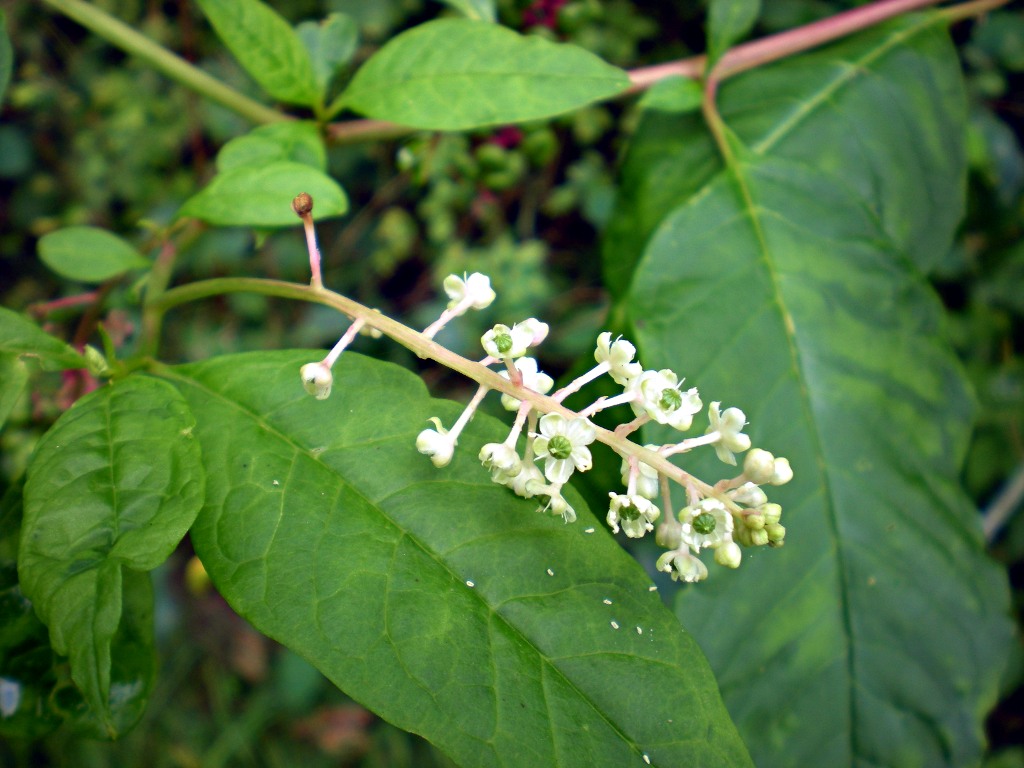
The inky black berries of Poke, probably poisonous but beautiful nonetheless. This is the only member of its family in our area, but it’s certainly common enough. Gray lists it as Phytolacca decandra.
Gray describes the family, genus, and species.
PHYTOLACCACEAE (POKEWEED FAMILY)
Plants with alternate entire leaves and perfect flowers, having the general characters of Chenopodiaceae, but usually a several-celled ovary composed of as many carpels united in a ring, and forming a berry in fruit.
PHYTOLACCA [Tourn.] L. POKEWEED
Calyx of 6 rounded and petal-like sepals. Stamens 5-30. Ovary of 5-12 carpels united in a ring, with as many short separate styles, in fruit forming a depressed-globose 5-12-celled berry, with a single vertical seed in each cell. Embryo curved in a ring around the albumen. Tall and stout perennial herbs, with large petioled leaves, and terminal racemes which become lateral and opposite the leaves. (Name compounded of phyton, plant, and the French lac, lake, in allusion to the crimson coloring matter which the berries yield.)
1. P. decandra L. (COMMON POKE or SCOKE, GARGET, PIGEON BERRY.) A smooth plant, with a rather unpleasant odor, and a very large poisonous root (often 1-1.5 dm. in diameter) sending up stout stalks at length 2-3 m. high; calyx white; stamens and styles 10; ovary green; berries in long racemes, dark-purple, ripe in autumn. Low grounds and rich soil, s. Me. to Ont., Minn., and south w. July-Sept.

